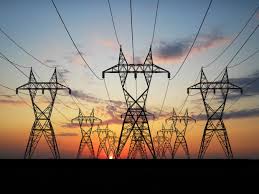 The behaviour of members of the incumbent electricity industry, and policy failures by the Ministerial Council, the Australian Energy Markets Commission and government energy policy makers have led to unnecessarily high electricity costs and price distortions.
The behaviour of members of the incumbent electricity industry, and policy failures by the Ministerial Council, the Australian Energy Markets Commission and government energy policy makers have led to unnecessarily high electricity costs and price distortions.
These have been well documented by both the Productivity Commission in 2013 and the 2012 Senate Inquiry. From a consumer perspective, addressing these issues would have a much more significant impact on energy service costs and economic efficiency than changing the renewable energy target.
It makes more sense to remove existing distortions than to undermine a growing and essential industry.
For the incumbent industry to blame the RET for electricity service cost increases while they behave in the ways they have done is hypocritical and works against the interests of consumers – contradicting a key requirement of the National Electricity Objective (as emphasised by the Productivity Commission 2013 report).
Focusing on the RET without addressing these issues is a form of victimisation that also happens to benefit the incumbent industry.
Key factors include:
- Declining electricity demand (which saves consumers money) largely reflects the success of a range of cost-effective government energy efficiency policies intended to deliver economic, social and environmental benefit and cut greenhouse gas emissions. It also reflects the impact of the high Australian dollar and dramatic increases in electricity prices caused by factors other than RET – see below. These factors are not the fault of the RET, and RET policy should not become the whipping boy for the impacts of these changes on the electricity industry. Indeed, the impact of successful cost-effective energy efficiency programs should be applauded.
- Half of the recent $40+ billion investment in network upgrades could have been avoided by better policy and/or more socially responsible behaviour by network operators (Carbon+Energy Markets). This would save consumers the amount of revenue required to service this debt and pay shareholders a return. This avoided $20 billion investment would have reduced consumer prices by at least $10/MWh.
- The Productivity Commission and others have identified ‘gaming’ by electricity generators that adds hundreds of millions of dollars to annual consumer electricity costs.
- The Victorian Essential Services Commission has reported that profit margins for Victorian energy retailers seem unreasonably high. The Victorian approach is being used as a model for other states, so there is a risk of this problem spreading.
- Several state regulators incorporate into their ‘default’ retail price an allowance for ‘customer acquisition costs’ which is inappropriate for a default price, which involves no customer acquisition costs. This provides more ‘headroom’ for retailers to claim larger discount benefits from their market offers, which provides a misleading impression of customer benefit and reduces pressure on them to reduce prices. It also increases energy costs for those who stay on the default tariffs.
- The uncertainty created for renewable energy investors by the way this Inquiry has been managed by government has slowed investment, and will increase the cost and practical difficulty of achieving the RET 2020 target. This cost should not be attributed to the RET.
- Proposals to charge supposedly cost-reflective prices are, in principle, potentially desirable paths. However, there are several ways of doing this, with varying impacts. Applying charges (especially higher fixed charges) only to owners of distributed renewable energy systems must be viewed in a context of long term failure of network operators and retailers to apply ‘cost-reflective’ charges and efficient pricing structures in other circumstances, such as to users of air conditioners and inefficient lighting. Existing generators do not pay for transmission and distribution. There is a ‘can of worms’ here that must be dealt with in a comprehensive way: it is inappropriate and unfair to selectively apply charges to renewable energy.
- The design of the electricity spot market has historically delivered windfall profits to generators during times of high prices. This market feature is now amplifying the adverse financial impacts of multiple changes noted earlier on incumbent generators: RET is not to blame for this. And generators have done well from this market design for 15 years.
- Network operators have historically received well above fair rates of return on their assets, as pointed out by Professor Ross Garnaut. This potentially adds around 2 percentage points to retail prices, around $40 per year for an average household. There is a case for any extra costs caused by the present uncertainty to be paid either by the incumbent industry (through reduction of some of the distortions listed here) or by governments from general revenue, as they are not caused by the RET.
Over decades, Australians have responded to surveys showing they want an energy efficient, renewable energy future. So exactly who would be unhappy if the RET ‘over achieves’? Indeed, there is a case to expand the adoption of renewable energy beyond the RET 2020 target.
It is now argued by some that the reduction in renewable energy investment resulting from recent uncertainties and policy distortions provides a rationale for reducing or deferring the 2020 RET target. To do this would encourage lobbyists to work even harder to manipulate public policy. This is a very dangerous approach to policy. In practice, the renewable energy industry is a large and rapidly growing global industry. It will find ways of meeting the existing 2020 target. Indeed, if we look back to the original MRET, the 2010 target was met three years early!
This article is adapted from a submission to the RET Review by panel by Alan Pears, an associate professor at RMIT, and a leading analyst of Australia’s energy markets.










